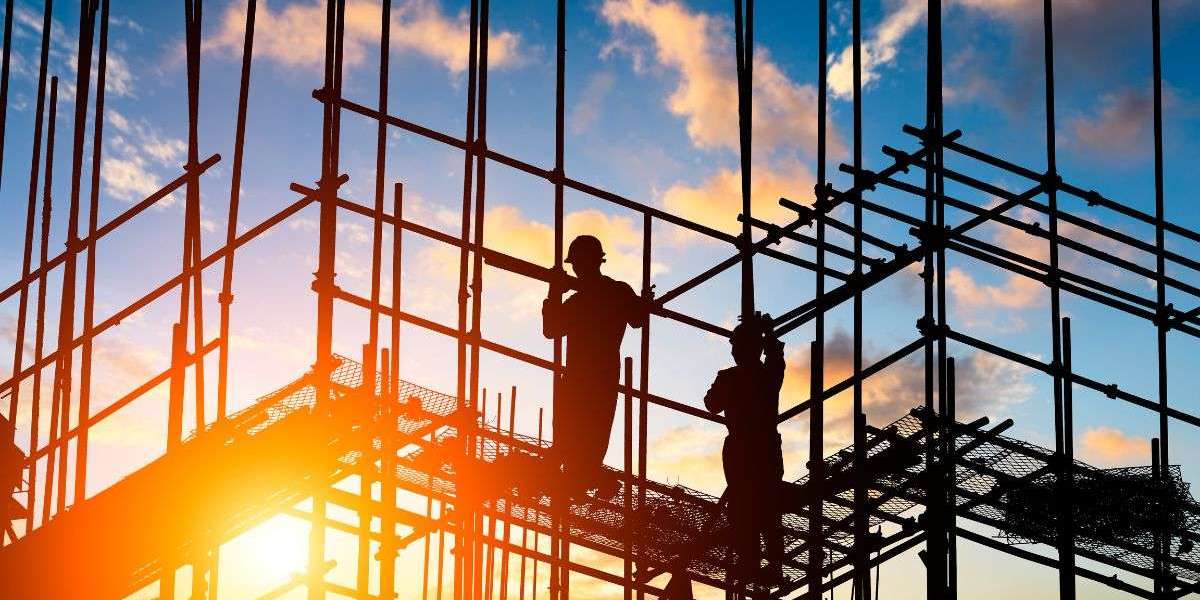The Australia construction market, valued at AUD 423.38 billion in 2024, has experienced significant growth, driven by the promotion of new construction technologies that enhance efficiency and reduce project costs. The market is forecasted to grow at a compound annual growth rate (CAGR) of 4.00% from 2025 to 2034, potentially reaching AUD 626.71 billion by 2034, as it fosters job creation and makes a substantial contribution to the country’s GDP and overall economic development. This growth is underpinned by a strong demand for residential, commercial, and infrastructure development projects, which continue to shape the construction landscape in Australia.
Key Drivers of Market Growth
Technological Advancements: New construction technologies, such as Building Information Modeling (BIM), 3D printing, and modular construction, are transforming the Australian construction industry. These innovations are helping to reduce construction time, improve project accuracy, and lower costs, making projects more efficient and sustainable. As more companies adopt these technologies, the industry is expected to continue experiencing growth.
Urbanization and Population Growth: Australia’s population is steadily increasing, especially in urban areas. This demographic shift is driving demand for more residential, commercial, and mixed-use developments. The growth of major cities like Sydney, Melbourne, and Brisbane is further accelerating the need for infrastructure improvements, creating opportunities for both private and public sector projects.
Government Investment in Infrastructure: The Australian government has been heavily investing in infrastructure to address the country’s growing needs. Major infrastructure projects, such as transportation networks, airports, hospitals, and energy facilities, are driving growth in the construction sector. This investment not only addresses long-term needs but also creates jobs and stimulates the economy.
Sustainability and Green Construction: There is a growing emphasis on sustainability within the construction industry. More developers and builders are focusing on energy-efficient, eco-friendly buildings, using sustainable materials, and incorporating renewable energy sources in their designs. Green construction is expected to gain further traction, as the government pushes for more stringent environmental regulations and consumers demand eco-conscious living spaces.
Private Sector Demand: In addition to government infrastructure projects, the private sector continues to play a crucial role in driving the construction market. High demand for residential housing, particularly in metropolitan areas, is spurring both large-scale developments and smaller, customized projects. Commercial spaces for retail, offices, and hospitality also remain in demand, providing further opportunities for growth in construction.
Labor and Skills Development: The construction industry in Australia has faced challenges with labor shortages, particularly in specialized fields like skilled trades and project management. However, increasing investments in vocational education and training, as well as the rise of digital technologies in construction management, is helping to address these gaps, improving efficiency and attracting talent to the industry.
Market Segmentation
The Australian construction market can be broken down into several key segments based on type of construction and market drivers:
Residential Construction: This segment remains a significant driver of the overall market. Housing demand in Australia continues to rise, particularly in urban areas, due to population growth and migration. The increasing trend of urbanization, along with favorable government policies for first-time homebuyers and affordable housing projects, is expected to continue driving the growth of the residential construction sector.
Commercial Construction: As the economy grows and businesses expand, the demand for commercial spaces, including office buildings, retail stores, and hospitality facilities, remains strong. Commercial construction is benefiting from increasing investments in business infrastructure, particularly in key metropolitan areas. The sector is expected to see steady growth over the next decade, with a growing need for mixed-use developments that combine residential, commercial, and recreational spaces.
Industrial Construction: The industrial construction market, which includes factories, warehouses, and distribution centers, is also expected to grow as e-commerce continues to boom. With the rise of online retail, the demand for warehousing and distribution infrastructure is creating opportunities for industrial construction projects, particularly in regions with strong logistical networks.
Infrastructure Construction: The infrastructure sector encompasses transportation, energy, and utility projects. With substantial government investments, this sector is expected to see the highest growth rate. Projects such as new highways, bridges, tunnels, airports, rail systems, and renewable energy facilities are central to Australia’s long-term growth strategy, ensuring a steady stream of work for construction firms.
Specialized Construction: This niche segment includes projects such as healthcare facilities, educational institutions, and other specialized buildings that require high levels of technical expertise. As the Australian population ages and healthcare demands grow, the construction of healthcare facilities, including hospitals and aged care centers, is expected to rise.
Challenges Facing the Construction Market
Labor Shortages: Despite efforts to attract and train skilled workers, the construction industry in Australia is facing ongoing challenges with labor shortages, especially in regional and rural areas. The demand for skilled trades such as electricians, plumbers, and carpenters continues to outpace supply, which can cause delays and increase costs for construction projects.
Cost and Material Price Fluctuations: The construction sector has faced volatility in the prices of raw materials, particularly due to global supply chain disruptions. Rising costs for steel, timber, and other building materials can significantly impact project budgets and timelines. This challenge is exacerbated by inflationary pressures, which can increase labor and operational costs.
Regulatory Challenges: The construction market in Australia is subject to various regulations and standards that govern everything from building codes to environmental requirements. Staying compliant with these regulations while meeting project deadlines can be challenging, particularly for large-scale projects that involve multiple stakeholders.
Environmental Concerns: With growing attention on climate change, there is increasing pressure for the construction industry to minimize its environmental footprint. This includes reducing carbon emissions during construction, improving the energy efficiency of buildings, and sourcing sustainable materials. Although green building practices are gaining traction, they often come with higher upfront costs, which can be a barrier for some developers.
Future Outlook
The Australian construction market is poised for continued growth, with a forecasted CAGR of 4.00% from 2025 to 2034. By 2034, the market is expected to reach AUD 626.71 billion. This growth will be driven by the continued urbanization of Australia’s cities, large-scale infrastructure projects, and the expansion of both residential and commercial properties.
The emphasis on innovation and technology within the sector will continue to reshape the construction process, making it more efficient and cost-effective. Additionally, sustainability will play an increasingly important role as the demand for eco-friendly and energy-efficient buildings rises.
As the market grows, construction firms will need to focus on addressing labor shortages, managing costs, and ensuring regulatory compliance to maximize opportunities and mitigate challenges.
With the right strategies in place, the Australian construction market is set to contribute significantly to the country's economic development, creating jobs, improving infrastructure, and supporting the growth of various industries across the nation.








